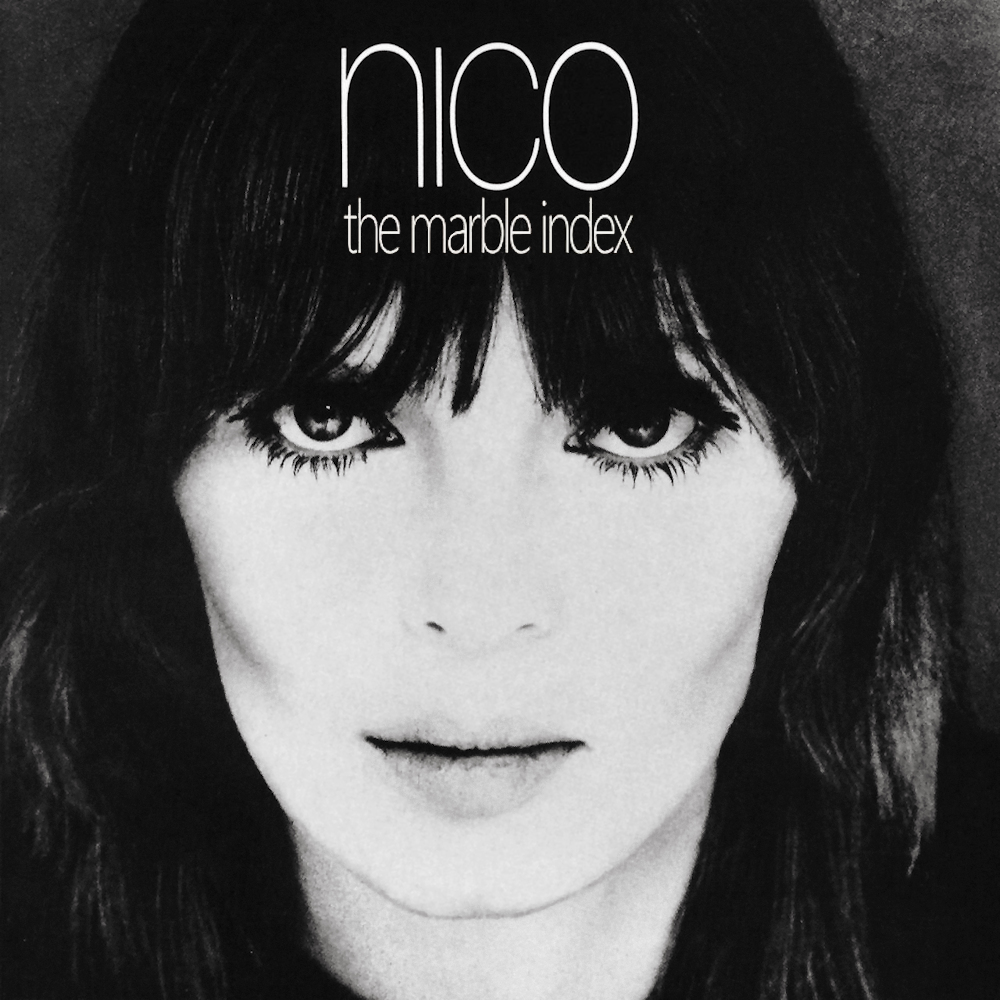VIA PRESS RELEASE | Domino announces physical reissues of Nico’s second and third solo albums, 1968’s The Marble Index and 1970’s Desertshore.


Both albums are available again on CD and vinyl after being out of print. The audio has been mastered from the original tapes. The Marble Index Domino Mart Edition features a limited edition 7″ of two tracks, “Roses in the Snow” and “Nibelungen,” that have never been previously released on vinyl. The CD and LP for both albums include previously unreleased photos of Nico by Guy Webster.
1967 was a transformative year for the German artist Nico. After the release of March’s The Velvet Underground & Nico, she departed the group and recorded her first solo effort, Chelsea Girl. She was disappointed by the album, disturbed by the addition of flute in the arrangements, but also perhaps by the feeling that she had not yet expressed her true self in song.
That summer, she befriended The Doors’ Jim Morrison, who was currently topping the charts with “Light My Fire.” Morrison encouraged Nico to write her own songs and pick up an instrument. She chose the harmonium, a pedal-powered keyboard that functions like a small organ. Acoustic and relatively portable—necessary for her transient lifestyle—as well as fundamentally individualistic, the harmonium was palpably Nico’s instrumental counterpart. Nico devoted herself entirely to her craft: when she wasn’t writing songs by candlelight from a bathtub, she was practicing harmonium night and day.


The result of these efforts was 1968’s The Marble Index, an ambitious, uncompromising record. Avant-garde from front-to-back, its songs are both archaic and abstract, foreshadowing industrial and ambient music. Nico was joined in the studio by her old bandmate John Cale, marking the beginning of the latter’s long career as a producer. Though the harmonium was then popular in Western takes on Eastern raga, Cale leaned into the instrument’s classical European roots and paired Nico’s gothic lyrics with austere instrumentation.
When Nico recorded her third solo album, 1970’s Desertshore, she no longer resembled the Superstar whose image had once adorned massive posters across Manhattan. Her artistic rebirth required a new visual identity and the blonde fringe and white suits of her It Girls days had been replaced by voluminous black clothing and hennaed red hair.
Though Nico was beginning to struggle with the heroin addiction that would color the rest of her life, Desertshore affirms that she had evolved into a more confident musician and Cale accentuates that growth with arrangements that soar skyward. Desertshore pulls, however obliquely, from recent tragedies in Nico’s life: the attempted murder of Andy Warhol (“The Falconer” ); the death of her mother (“Mütterlein,” which Nico delivers in her native German) and the drowning of the Rolling Stones’ Brian Jones (“Janitor of Lunacy”). “You are beautiful and you are alone,” Nico sings on “Afraid,” words that cut to the heart of her complicated mythos.
The Marble Index and Desertshore capture Nico at a pivotal moment of self-transformation. These two records are portraits of the woman she indisputably was: a complex visionary fated to gaze into the heart of darkness, unafraid of potentially finding herself there.
